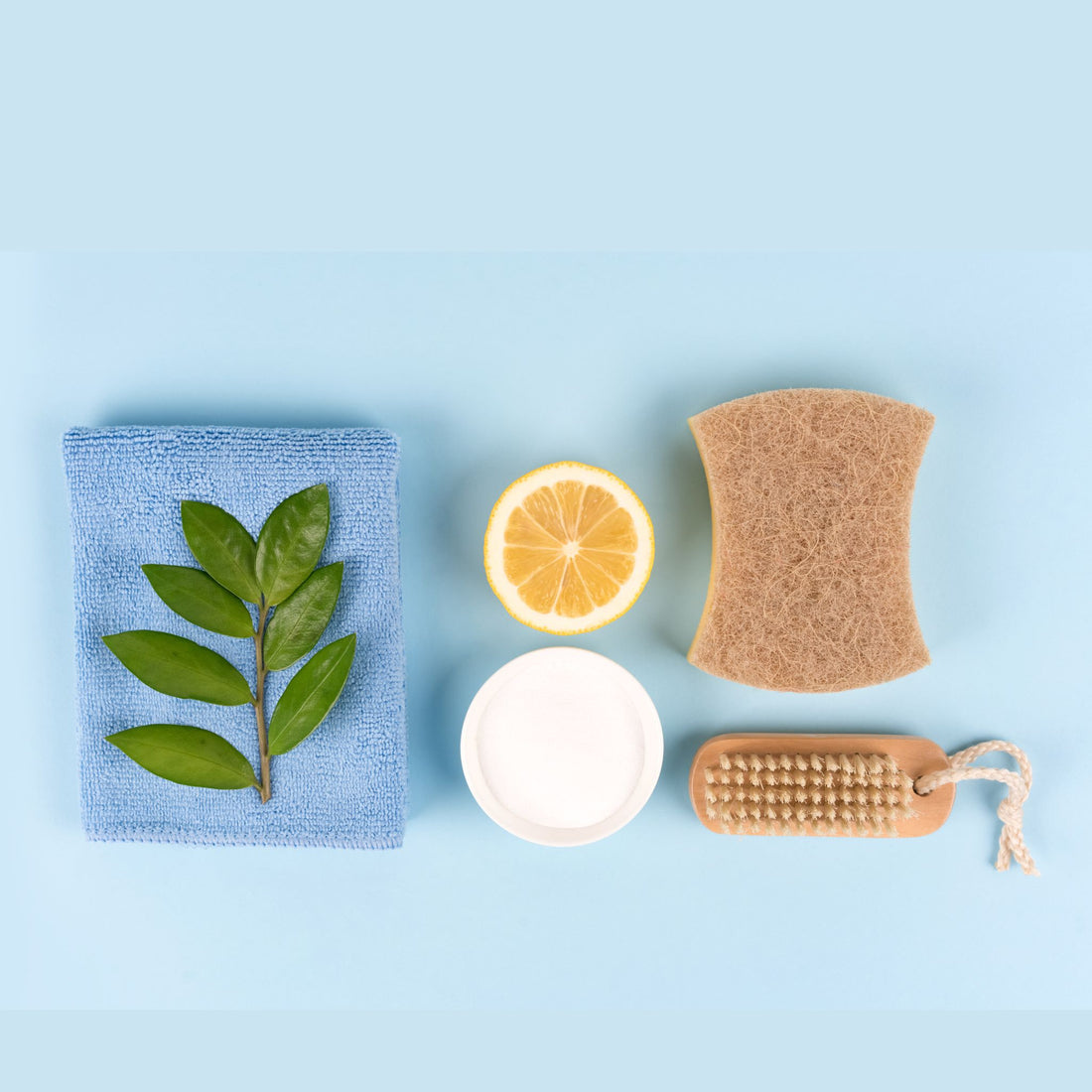
Creating a Healthier Home: A Guide to Eliminating Common Household Chemicals
Share
In today's fast-paced world, household cleaning and maintenance have become synonymous with an array of chemical-laden products. While these products promise cleanliness and convenience, they often come with hidden dangers. The chemicals found in many conventional cleaners can contribute to indoor air pollution, harm the environment, and pose health risks to you and your family. But don't worry! There are natural alternatives that can help you maintain a sparkling home without compromising your well-being. In this comprehensive guide, we'll explore the dangers of common household chemicals and provide expert-backed solutions to create a healthier living environment for you and your loved ones.
Unveiling the Hazards: Understanding Common Household Chemicals
Before we delve into natural alternatives, it's essential to grasp the risks associated with the common chemicals found in many household products. Here are some of the culprits and their potential dangers:
- Ammonia
Ammonia is commonly found in glass and bathroom cleaners. It can irritate the respiratory system and even lead to lung damage if inhaled excessively.
- Phthalates
Phthalates are often present in air fresheners and fragranced products. These known endocrine disruptors can interfere with hormonal balance and potentially cause developmental issues.
- Sodium Lauryl Sulfate (SLS)
SLS is a foaming agent used in many cleaning and personal care products. It can cause skin and eye irritation, and it's linked to organ toxicity.
- Chlorine
Chlorine is widely used in toilet cleaners and bleach. Chlorine fumes can trigger respiratory problems and skin irritation. Mixing chlorine with other chemicals can even produce harmful gases.
- Formaldehyde
Formaldehyde is present in various cleaning agents and is a known carcinogen that can also cause respiratory problems and skin sensitivities.
Embracing Natural Alternatives: A Path to Safer Cleaning
Transitioning to natural alternatives can significantly reduce your exposure to these harmful chemicals. Here's a curated list of alternatives that will help you maintain a clean home while prioritizing your well-being:
- Vinegar
Vinegar is a versatile all-purpose cleaner. White vinegar can tackle grease, grime, and even mildew. Mix equal parts of water and vinegar in a spray bottle for an effective cleaning solution.
- Baking Soda
Baking soda is a gentle abrasive that can scrub surfaces, neutralize odors, and even act as a deodorant. Combine baking soda with water to form a paste for scrubbing sinks, tubs, and tiles.
- Essential Oils
Essential oils are natural wonders that not only add pleasant scents but also possess antimicrobial properties. Tea tree oil, lavender oil, and lemon oil are excellent choices for DIY cleaning solutions.
- Castile Soap
Castile soap, made from plant oils, is a biodegradable option that can be used for dishwashing, laundry, and general cleaning. It comes in various scents and is highly versatile.
- Hydrogen Peroxide
Hydrogen peroxide is an effective disinfectant and stain remover. It can be used to clean surfaces like countertops and cutting boards. Ensure proper ventilation when using it.
- Microfiber Cloths
Microfiber cloths are specialized cloths that require minimal or no cleaning agents. They can effectively trap dust and bacteria, reducing the need for chemical-laden cleaners.
The importance of transitioning to natural cleaning alternatives cannot be overstated. Many conventional products not only impact our health but also contribute to pollution and environmental degradation. Natural options like vinegar and baking soda not only clean effectively but also promote indoor air quality. Essential oils, with their aromatherapy benefits, elevate the cleaning experience. It's a shift toward holistic well-being.
A Step-by-Step Transition Plan
Making the switch from chemical-laden products to natural alternatives might seem daunting, but with a step-by-step plan, you can achieve a toxin-free home:
- Educate Yourself
Understand the chemicals present in your current cleaning products. Check labels for terms like "fragrance," which can hide a myriad of undisclosed chemicals.
- Assess Your Needs
Identify the cleaning products you use most frequently. Research and gather natural alternatives for these products.
- Start Small
Begin by replacing one or two products with natural alternatives. For example, swap your bathroom cleaner for a vinegar-based solution.
- Experiment
Test different natural alternatives to find what works best for you. DIY recipes can be customized based on your preferences.
- Dispose Properly
Safely dispose of the chemical products you no longer need. Many communities offer hazardous waste disposal programs.
- Invest in Quality
Purchase high-quality microfiber cloths, essential oils, and other natural cleaning tools to ensure effectiveness.
- Spread the Word
Share your experiences with friends and family to inspire them to make healthier choices too.
Conclusion: A Cleaner Future Starts at Home
Creating a safer, cleaner home environment is an investment in your family's health and the well-being of the planet. By understanding the dangers of common household chemicals and embracing natural alternatives, you're taking a significant step toward sustainable living. Remember, the journey might take time, but every small change contributes to a brighter, healthier future. So, embark on this natural cleaning adventure, and let your home shine without compromising on health!
